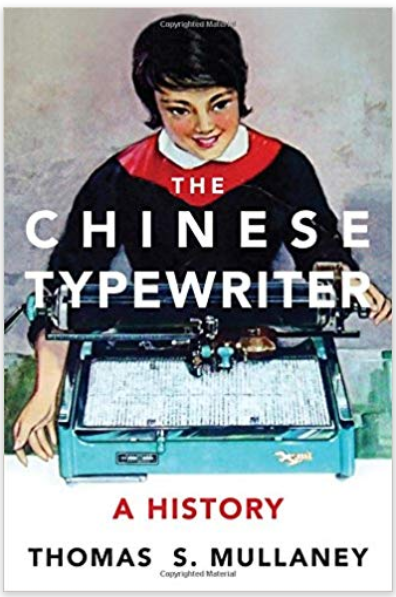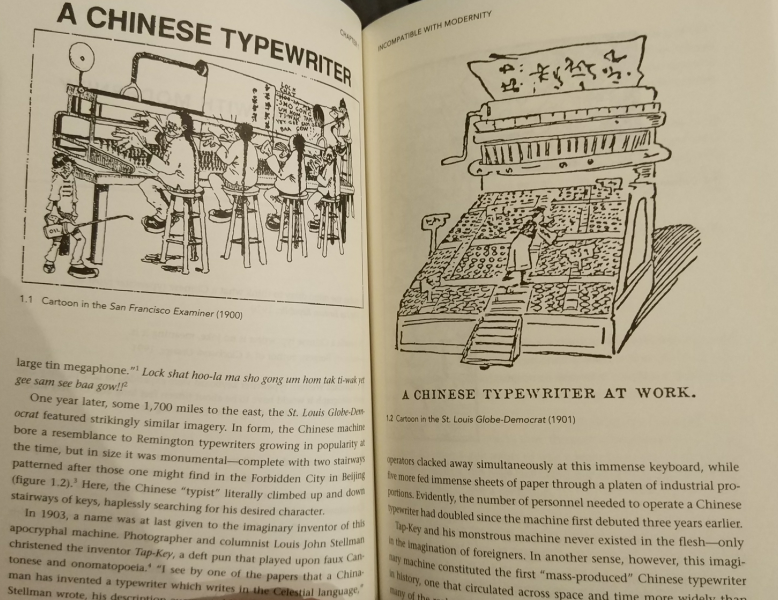博文
国外新书介绍:中文打字机简史
||

中文打字机简史,没错,这是一本书的名字,歪果仁写的。若不是我曾经关注过中文打字机的历史,也在我的小书中写过一段,根本不会留意到这本书。
在哈佛门口的COOP扫书,无意中看到这本书的书脊,以为放错地方了,怎么会放在亚洲历史的类目里呢。拿来一看,这封面立刻抓住了我,这不就是我一直想找的插图吗?超大键盘的中文打字机!!还是歪果仁牛,能找到这么好的图片。居然还是MIT出版社出的,于是忍不住把书翻了一遍,褥了一把书店的羊毛。
内容真不简单,虽然整体脉络差不多,但比我当年survey的功夫深多了,文献找的全,就看看这插图(希望作者原谅,这是给书做广告:)),也足够亮眼!这可是1900年的图片。也难怪我之前找不到,都是美国的媒体资料。。。

里面从西文打字机,讲到洋人和中国人在1900年之后的许多努力,涵盖几千汉字的超大键盘不是吹的。最具革命性的的当然是1950年代,林语堂耗30年之力开发的小键盘中文打字机。书中还有日本等地学者的诸多努力,以及电脑时代之后的变革。
此书材料丰富,语言干练,获了若干大奖,十分适合中文信息处理和数字人文的童鞋们练手,去体味中文计算的辛酸与使命。
再看看作者,绝非等闲之辈,教育背景一流,获奖诸多,是海外研究中国历史的年轻专家Thomas Mullaney(托马斯·马尔兰尼),斯坦福大学教授。

很帅的教授!
Thomas S. Mullaney is Professor of Chinese History at Stanford University, and Curator of the international exhibition, Radical Machines: Chinese in the Information Age.
Professor of Chinese History
Director of Undergraduate Studies, Department of History
Faculty Fellow, Science, Technology, and Society (STS)
Faculty Associate, Modern Thought and Literature (MTL)
Field:
East Asia
History of Science
Transnational, International, and Global History
Education
PhD, Columbia University, 2006
M.A., Johns Hopkins University, 2000
B.A., Johns Hopkins University, 1999
His new book, The Chinese Typewriter, examines China’s development of a modern, nonalphabetic information infrastructure encompassing telegraphy, typewriting, word processing, and computing. This project has received three major awards and fellowships, including the 2013 Usher Prize, a three-year National Science Foundation fellowship, and a Hellman Faculty Fellowship.
再看看他要出的新书,啥也不说了,坐等。
The Chinese Computer: A Global History of the Information Age (MIT Press, Forthcoming)
https://blog.sciencenet.cn/blog-39714-1196078.html
上一篇:编本词典有多难,看看牛津词典的大电影
下一篇:活字印刷难以普及之谜(语言探秘)